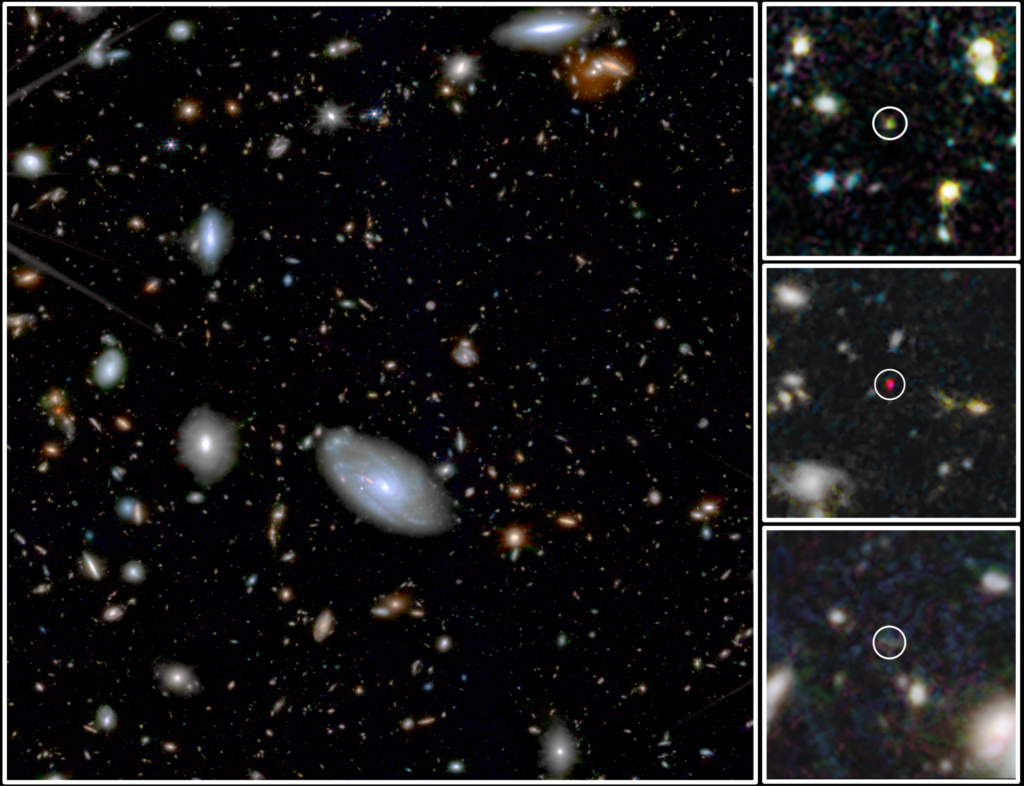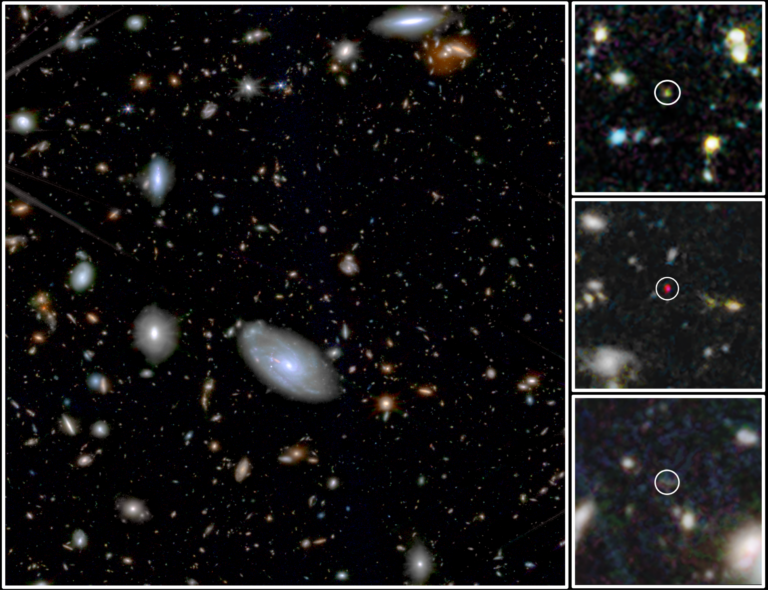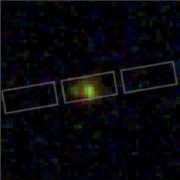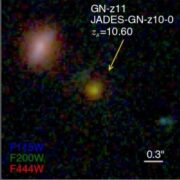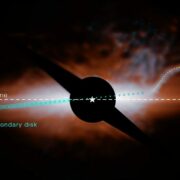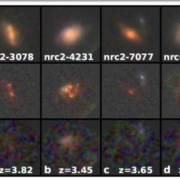In a recent study led by the Center for Astrobiology (CAB), CSIC-INTA (Spain), researchers from 9 countries have analyzed the deepest images taken by the NIRCam instrument of the James Webb telescope, within the Guaranteed Time granted to the members of the team that built the MIRI instrument, and have found many more galaxies, much brighter and much smaller in size than expected to be found in the early universe.
For 20 years, researchers from the Center for Astrobiology (CAB), CSIC-INTA, in Spain, have worked, jointly with astrophysicists and technicians of other 8 European countries and the United States, on the development of one of the instruments of the James Webb Space Telescope (JWST), MIRI. “As part of the payment for our work in the construction of MIRI, ESA and NASA awarded us with guaranteed telescope time to carry out scientific projects that we have been planning for decades,” says Luis Colina, MIRI co- principal investigator at CAB.
Guaranteed time observations began running in the fall of 2022, including what are the deepest images ever taken by JWST in the first year of science operations. Göran Ostlin, MIRI Co-Principal Investigator at Stockholm University, tells us: “In December 2022 we took data in an area of the sky known as the Hubble Ultra-deep Field using MIRI, JWST spent 50 hours collecting photons of distant galaxies. In parallel, the NIRCam instrument, JWST’s most sensitive camera, was also turned on, and with it we took data that allowed us to detect galaxies 10 times fainter than those that had been studied during the first 6 months of the mission. This is what we call the MIRI Deep Imaging Survey (MIDIS)”.
In an article published in The Astrophysical Journal Letters, the MIDIS team has presented their search for the most distant galaxies in the universe using NIRCam data. Pablo G. Pérez-González, a CAB astrophysicist who has worked on the project for 10 years, leads this work which has found 44 galaxies tentatively formed in the first 500 million years of the Universe, less than 4% of its current age, they even present some candidates formed in the first 200 million years of the universe, 1% of the age.
The main result of this work has been obtained by comparing the properties of these early galaxies with what was predicted by the most advanced galaxy formation models. Luca Costantin, a postdoctoral fellow at the CAB hired through the Madrid regional Government Talent Attraction program, and co-author of the article, tells us: “For decades, simulations of the universe developed with the most powerful supercomputers in the world have recreated how galaxies are formed, when the first stars appeared, how the primordial gas, which was only hydrogen and helium, was converted into other elements, such as oxygen or carbon, and how, ultimately, the fundamentals ingredients of life were created”.
The article compares the amount of ultraviolet photons that were created in these early galaxies discovered by JWST with what is predicted by cosmological simulations such as Illustris or EAGLE. “JWST is able to measure the amount of energy emitted in the ultraviolet by distant galaxies. Due to the effect of the expansion of the universe, today that energy takes the form of infrared photons, which are the ones that JWST and its NIRCam instrument can detect”, explains Pierluigi Rinaldi, a doctoral student at the University of Groningen and a collaborator on the project.
The first author of the article, Pablo G. Pérez-González, explains that “primeval galaxies created 10 times more ultraviolet photons than the models predicted, the key is how.” Ultraviolet photons can be created by hot, young stars, much hotter than the Sun, that rapidly evolve and disappear. But those ultraviolet photons can also be created by supermassive black holes. The article describes that the primeval galaxies discovered are also very compact, 2-3 times more than expected, which could be linked to the presence of these black holes.
“Where would those supermassive black holes have come from?
How could they have formed so quickly? Perhaps from primordial black holes that have been around almost since the Big Bang itself? Or from black holes that do not evolve from stars, which is how we think they normally form, but directly from the primordial gas, without going through stars, they collapsed directly? Or do we actually see more ultraviolet photons than expected because there are many more massive stars in primeval galaxies compared to the amount that is normally formed in nearby young galaxies?” says Pérez-González. “For now JWST is providing us with many more questions than answers, but these new lines of research are exciting,” the authors of the article conclude.
